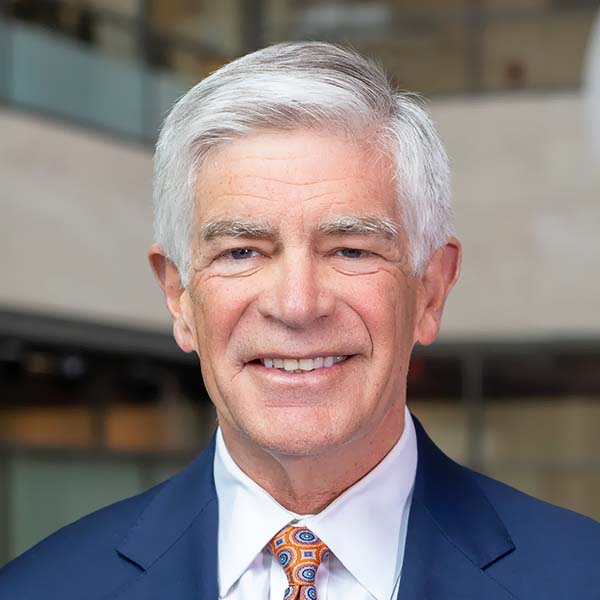


Throughout the nearly nine years I have been president and CEO at the Philadelphia Fed, my foremost responsibility has been our work through monetary policy to achieve the Fed’s dual mandate of price stability and maximum employment. To some, it can seem like a very static process, but how I arrive at these important decisions is much more dynamic. Let me explain.
Just a year ago, the inflation rate stood around 6 percent year over year, the labor market showed no signs of loosening, and the Federal Reserve’s fight against inflation was being measured by many in terms of not whether more interest rate hikes were in the offing, but rather how many more would be needed.
At that time, my support for hiking the policy interest rate to cool inflation put me among the “hawks” on the Federal Open Market Committee. But by summer, more data were available, and I became an early public voice for holding the Federal Reserve’s policy interest rate steady — a position many considered aligned with the “doves.”
But such decisions of national or even international economic impact require monetary policymakers to be open minded to all of the information that is coming to us, from all sources. We must also remain agile enough to change course.
So how did I get here? Let me explain.
Throughout the nearly nine years in which I have served as president and CEO of the Federal Reserve Bank of Philadelphia, my foremost responsibility has been our work through monetary policy to achieve the Fed’s dual mandate of price stability and maximum employment. To some outside observers, it may seem like a very static process, but in reality, how I arrive at these important decisions is much more dynamic. There are two ways I approach this part of my job.
The first is to look at the numerous economic indicators that are reported month to month. Inflation indicators, both the federally reported Personal Consumption Expenditure (PCE) and Consumer Price Index (CPI). Unemployment. Consumer spending. Manufacturing and other business indices. These numbers — often referred to as hard data — are the empirical points that serve as the basis for any number of analyses to decipher what is going on in our economy. They are, in a word, invaluable.
But as important as the hard data are, they do not tell the complete story. Hard data do not necessarily shed light on what may be going on below the surface. And while we as economists try our best to interpret what the hard data say, those interpretations can also often be open to interpretation. Moreover, hard data, by its nature, are always backward looking. There is always the chance that by the time a certain data set is reported, some as-yet-unseen swing may be in process or have occurred.
The best way to color in between the black and white of hard numbers is to listen directly to those around you — which for us at the Philadelphia Fed are the communities we serve throughout the Third District. Whether they be community bankers, small business owners, leaders of local and regional community-based organizations, and workers and residents. Their voices provide me with equally invaluable soft data.
Quite simply, soft data help not only better explain what I may be seeing in the economic updates but can also give me insights of emerging issues that may not show up in the numbers until further down the road.

Philadelphia Fed President Patrick Harker, second from right, listens to Olé Hongvanthong, pictured left, founder and co-owner of PhotOlé Photography, during a visit to Lancaster, Pennsylvania, in August 2023.
For example, my conversations with contacts across the Third District throughout last spring indicated that our rapid tightening of monetary policy was indeed cooling the economy. But what I also heard from them was a clear plea for time and room to breathe and adjust in the wake of the run-up in rates and continued economic uncertainties. Their reasoning quickly became evident to me as I studied the numbers and saw the localized impacts of higher rates on businesses and prospective home buyers begin to be more broadly borne out in the hard data. And I tempered my position on rate increases accordingly.
Now, as the curtain rises on 2024, inflation is roughly half of what it was at this time last year, and my expectation remains that inflation will continue to ebb as we head — slowly yet surely — toward our 2 percent annual target. Along with this, labor market tightness continues to ease, GDP growth continues to exceed expectations, and the possibility of a recession seems less likely.
The hard numbers clearly show this progress. But my decisions on the direction of monetary policy were shaped well before many of those numbers were reported, let alone collected. The soft data gave me greater insights into the broader impacts of monetary policy — insights that I would not have as easily gained had I not traveled across the Third District to listen and learn about the real-time experiences of our workers, business owners, community leaders, and residents.
This is the dynamic part of my job and perhaps the process I enjoy the most.
As always, hard data are at the core of how I consider monetary policy. But I will also continue to be guided equally by soft data. I will continue to keep my eyes and ears open to what is happening across the communities we serve. By carefully balancing both hard and soft data in the broader discussion of monetary policy, we can continue to make real progress toward a strong and stable economy.